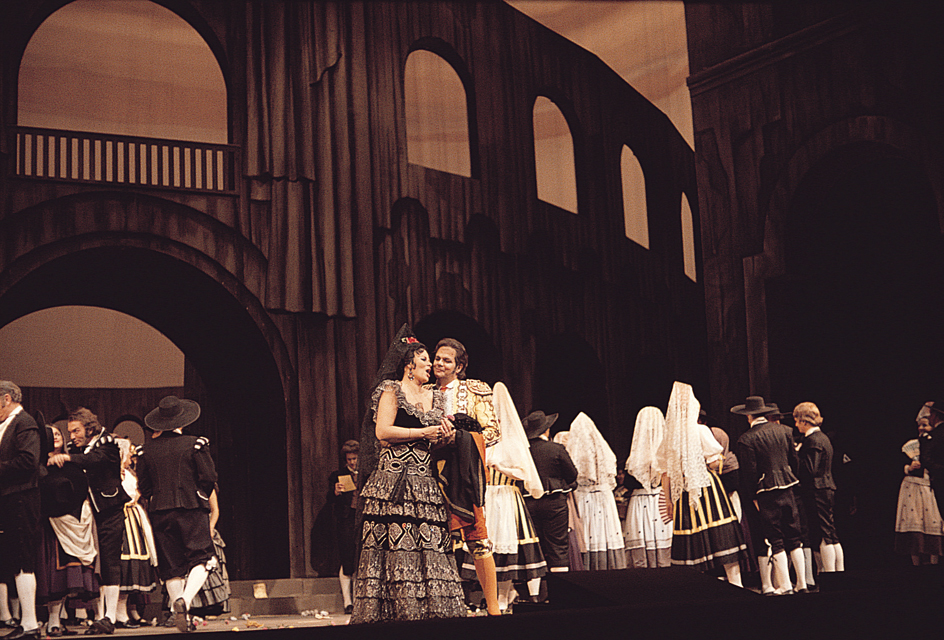Carmen is a tragic opera in four acts by the French composer Georges Bizet to a libretto (text) in French by Ludovic Halevy and Henri Meilhac. It is based on a short novel by the French author Prosper Merimee published in 1845. The first performance of Carmen was at the Opera Comique in Paris on March 3, 1875.

The action of Carmen is set in and near Seville, Spain, in about 1820. In the city square, Micaela, a simple country girl, meets her sweetheart, Don Jose, a corporal from her village. Carmen, a Roma (Gypsy) who works in the local cigarette factory, is irresistible to men. Passing by as she returns to work with the other girls, she throws Don Jose a flower. Later, at the factory, Carmen gets into a fight with another girl and is arrested. Don Jose is sent to guard her, but he is fascinated by her and allows her to escape.
Loading the player...Carmen
Carmen and Don Jose have a rendezvous in an inn frequented by the Gypsy’s smuggler friends. Zuniga, Don Jose’s captain, also appears at the inn hoping to find Carmen alone. After threatening him, the jealous Don Jose is forced to desert the army to flee with Carmen. She eventually tires of Don Jose and leaves him for Escamillo, a bullfighter. On the day of Escamillo’s bullfight in Seville, Don Jose appears at the bullring, confronts Carmen, and begs her to return to him. After she scornfully refuses, Don Jose stabs her to death in a jealous rage, while offstage the crowd is heard celebrating Escamillo’s great triumph.
The exciting plot, colorful Spanish setting, and stirring music have made Carmen one of the most popular works in the opera repertoire. Many of the opera’s arias (solo numbers) have become almost as familiar as popular songs. In one, the “Habanera,” Carmen paints her own character as a free spirit, warning each man around her to beware should she choose to love him. In the “Seguidilla,” she completes her seduction of Don Jose and tells of the delights of the inn where they are to meet. Both these dancelike arias are heard in Act I. Other familiar arias are Escamillo’s “Toreador Song” and Don Jose’s “Flower Song,” both in Act II, and Micaela’s soliloquy in Act III. The opera also has vigorous choral and dance numbers.
See also Bizet, Georges ; Merimee, Prosper
